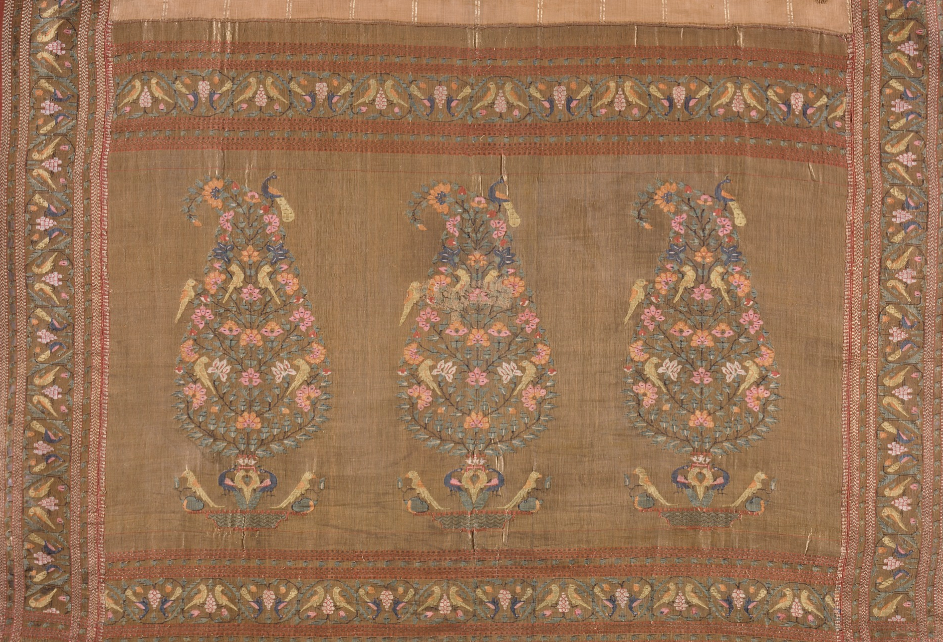Embark on a journey through the opulent world of Paithani Silk Sarees, where threads of tradition, history, and craftsmanship intricately weave a tapestry of timeless elegance. Originating from the cultural heartland of Maharashtra, Paithani Silk Sarees are renowned for their vibrant colors, intricate zari work, and distinctive peacock and flower motifs. In this exploration, we delve into the captivating allure of Paithani Silk Sarees, unraveling the story of this exquisite traditional attire.
What is a Paithani Silk Saree?
Paithani Silk Sarees derive their name from the town of Paithan in Maharashtra, where they originated. Crafted from pure silk and adorned with vibrant zari work, these sarees are a symbol of cultural richness and artistic finesse. The hallmark of Paithani sarees is the use of fine silk threads and the interplay of contrasting colors to create intricate patterns.
When Did the Legacy Begin?
The legacy of Paithani Silk Sarees dates back to the 200 BCE era during the Satavahana dynasty rule in Maharashtra. However, it wasn't until the 17th century that these sarees gained prominence during the Maratha rule. Over the centuries, Paithani Silk Sarees have evolved, preserving their traditional essence while embracing contemporary design influences.
Where Are Paithani Silk Sarees Woven?
Authentic Paithani Silk Sarees are handwoven in the town of Paithan and nearby Yeola in Maharashtra. The unique combination of geography, climate, and skilled craftsmanship in this region contributes to the distinctive quality of Paithani Silk Sarees.
Who Adorns Paithani Silk Sarees?
Paithani Silk Sarees are cherished by women who appreciate the fusion of tradition and elegance. These sarees are often donned during special occasions such as weddings, festivals, and cultural celebrations. The peacock and flower motifs, along with the kaleidoscopic color palette, make Paithani sarees a favorite among those who seek a regal and sophisticated look.
Why Choose Paithani Silk Saree?
- Zari Workmanship: Paithani Silk Sarees are characterized by their intricate zari work, where metallic threads of gold or silver are woven into the fabric. This imparts a luxurious and ornate finish to the saree.
- Vibrant Colors: The use of vibrant and contrasting colors is a distinctive feature of Paithani Silk Sarees. The color combinations are carefully chosen to create visually stunning and harmonious patterns.
- Peacock and Flower Motifs: The recurring motifs of peacocks and flowers in Paithani sarees symbolize beauty, grace, and nature. These motifs are intricately woven, adding to the aesthetic appeal of the saree.
- Pure Silk: Paithani Silk Sarees are crafted from pure silk, providing a luxurious and comfortable drape. The fine silk threads contribute to the saree's soft texture and regal feel.
- Cultural Heritage: Paithani Silk Sarees are deeply rooted in Maharashtra's cultural heritage. Wearing a Paithani saree is not just a fashion statement; it's a celebration of tradition and craftsmanship.
Consumption of Paithani Silk Saree in India:
Paithani Silk Sarees hold a special place in the wardrobes of Maharashtrian women and those across India who appreciate the cultural significance of this traditional attire. The demand for Paithani sarees surges during festive seasons, weddings, and cultural events.
Benefits of Paithani Silk Saree:
- Cultural Preservation: Paithani Silk Sarees play a vital role in preserving Maharashtra's cultural heritage. The sarees are a testament to the artistic skills passed down through generations.
- Artisan Empowerment: The handwoven nature of Paithani sarees ensures the empowerment of skilled artisans. Each saree is a labor of love, reflecting the dedication and expertise of the weavers.
- Versatility: While Paithani Silk Sarees are often associated with traditional occasions, contemporary designs and color variations make them versatile enough for modern fashion preferences.
Disadvantage or Why Try Other Sarees?
While Paithani Silk Sarees are revered for their unique qualities, individuals may explore other saree varieties based on specific preferences:
- Heavy Embellishments: Some individuals may prefer sarees with less ornate embellishments, as Paithani sarees are known for their intricate zari work, which adds weight to the fabric.
- Color Preferences: Paithani sarees are characterized by bright and contrasting colors. Individuals with a preference for subdued or pastel shades may opt for sarees with different color palettes.
- Occasion Specificity: The opulence of Paithani Silk Sarees may make them more suitable for grand occasions. Those seeking everyday wear or lighter sarees might explore other options.
Conclusion:
In conclusion, Paithani Silk Sarees stand as a timeless embodiment of Maharashtra's cultural opulence. Wearing a Paithani saree is not just an aesthetic choice; it's a celebration of tradition, artistry, and the enduring legacy of handwoven textiles. As women drape themselves in the resplendent hues and intricate patterns of Paithani Silk, they become a part of a heritage that transcends time, bringing the elegance of Maharashtra's cultural tapestry to life.
Distinct Types of Silk Sarees
India is renowned for its rich cultural heritage and diverse silk weaving traditions. Various regions across the country produce distinct types of silk sarees, each characterized by unique weaving techniques, designs, and cultural significance. Here are some popular types of silk sarees in India:
-
- Origin: Varanasi, Uttar Pradesh
- Features: Known for intricate zari work, gold and silver brocade, and vibrant colors. Often adorned with floral or Mughal-inspired motifs.
-
- Origin: Kanchipuram, Tamil Nadu
- Features: Characterized by rich silk, contrasting borders, and elaborate zari work. Traditional motifs include peacock and temple designs.
-
- Origin: Patan, Gujarat
- Features: Double ikat technique with vibrant geometric patterns. Patola sarees are known for their intricate designs and are usually a part of bridal trousseaus.
-
- Origin: Baluchar, West Bengal
- Features: Depicts mythological scenes and narratives through intricate brocade work. Borders and pallus often showcase detailed artistic designs.
-
- Origin: Chanderi, Madhya Pradesh
- Features: Light and translucent texture with fine zari work. Often adorned with traditional coin, floral, or peacock motifs.
-
- Origin: Mysore, Karnataka
- Features: Made from pure silk, these sarees are known for their simplicity and elegance. Often feature minimal zari work and vibrant colors.
-
- Origin: Bhagalpur, Bihar
- Features: Made from Tussar silk, these sarees have a rich texture and natural gold hue. Often adorned with ethnic prints and traditional motifs.
-
- Origin: Paithan, Maharashtra
- Features: Known for its peacock and flower motifs, these sarees have a silk base with vibrant zari borders. Paithani sarees are often worn during weddings and festivals.
-
- Origin: Kota, Rajasthan
- Features: Light and airy, with a unique square-check pattern. Often combined with silk to create elegant sarees.
-
- Origin: Rajasthan and Gujarat
- Features: Tie and dye technique creates intricate patterns on silk. Bandhani silk sarees are vibrant and popular during festivals and weddings.
These are just a few examples, and there are many more regional variations and types of silk sarees in India, each reflecting the cultural diversity and craftsmanship of the region it comes from.

